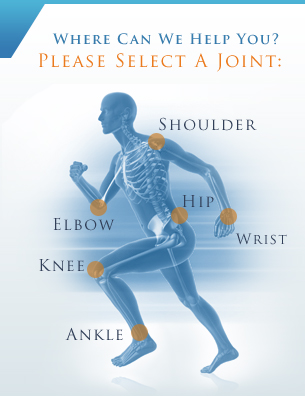
Procedures: Knee
|
|
Treatment of PCL (Posterior Cruciate Ligament) Tears
The posterior cruciate ligament (PCL) is one of four ligaments that helps support the knee and protects the shin bone (tibia) from sliding too far backwards. While injuries to the anterior cruciate ligament (located right in front of the PCL) are much more common, PCL injuries can account for up to 20 percent of knee injuries.
Injury to the PCL most commonly occurs when the knee is bent and an object strikes the shin, pushing it backwards. This is known as a "dashboard injury" because it often happens during a car accident when the shin is forcefully pushed into the dashboard. Other patients may experience a PCL tear from a sports injury or a fall.
Patients with PCL tears may experience pain, swelling and limited range of motion within the knee. Some may also experience a feeling that the knee has popped or given out, as it causes instability within the joint. While many symptoms of this injury can be relieved, instability of the joint often persists and may require more aggressive treatment.
Treatment for a PCL tear can vary depending on the severity of the injury and the doctor's treatment preference. Unlike an ACL tear, there is no standard treatment for a PCL tear. Initial conservative treatment may include applying ice, using crutches and keeping the knee elevated. Once initial symptoms subside, surgical repair may be required for severe tears. This procedure may be difficult to perform because of the location of the PCL within the knee, and is usually reserved for patients who have had several knee ligament injuries or have persistent instability.
Aseptic Prepatellar Bursitis Treatment
Aseptic Prepatellar Bursitis, also known as "Housemaid's Knee," is a medical condition characterized by the painful swelling of the knee due to the inflammation of the bursa atop the patella. This condition commonly afflicts laborers who spend a good deal of time working on their knees, such as housemaids, plumbers, and gardeners. This tissue is designed to keep the patella lubricated and sliding smoothly underneath the skin, but the constant pressure of kneeling can cause significant irritation. The symptoms of prepatellar bursitis may include:
- Pain at the kneecap
- Swelling on top of the knee cap
- Limited range of motion in the knee
These symptoms are similar to a host of other knee problems, aside from the location of the swelling being specific to the site of the bursa. They are treated the same as other ailments, using the RICE method of rest, ice, compression and elevation. Also, avoidance of kneeling activities is strongly advised. Non-steroidal anti-inflammatory drugs, such as ibuprofen, may also be prescribed in acute cases.
In chronic cases where the disorder has gone untreated, knee pads may need to be worn during kneeling work on a consistent basis if no alternative can be found. Antibiotics are also used if the bursa becomes infected after the long term irritation. If the case persists, surgical excision of the bursa may be suggested. This last approach is normally restricted to the most serious of cases that risk losing the lubricating tissue in favor of less overall knee damage.
Runner's Knee
Runner's knee is a common ailment affecting runners and other athletes as a result of overuse, trauma, misalignment or weak muscles and leading to pain and other symptoms. Any activity that requires frequent knee bending, including walking, biking or jumping, can result in runner's knee, also known as patellofemoral pain syndrome.
Athletes with runner's knee often experience pain behind or around the kneecap which may worsen while walking, kneeling, running or sitting, as well as swelling and a popping sensation in the knee. Your doctor may perform an x-ray, MRI or CT scan in addition to a complete medical evaluation in order to diagnose this condition.
For many patients, runner's knee can be effectively healed through simple life remedies like resting, icing and elevating the knee, wearing arch supports, taking anti-inflammatory medications and performing stretching and strengthening exercises. Severe cases may require surgery to remove damaged cartilage or realign the kneecap to evenly distribute pressure. Your doctor will develop a customized treatment plan for your individual condition.









